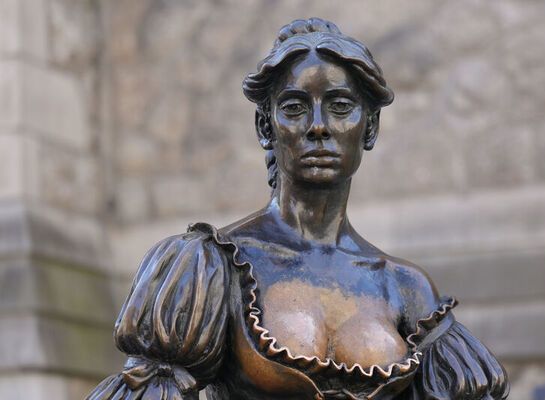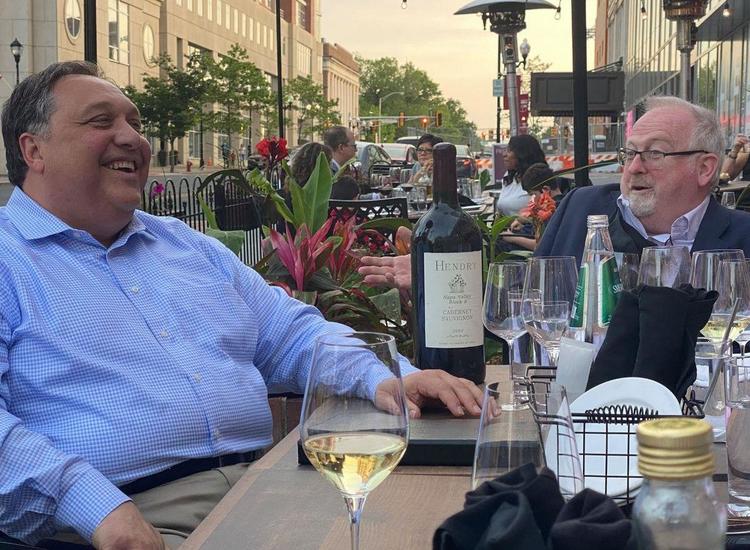The New York Irish Center is a half-minute walk from Jackson Avenue/Vernon Avenue, the first subway stop east of Grand Central and it is adjacent to the entrance to the Midtown Tunnel. There's hardly a more convenient and accessible spot in the city's five boroughs. And that's just one reason to celebrate the multi-story building, according to its executive director
When Paul Finnegan took over last summer, countless hours of volunteer labor, both skilled and unskilled, had been donated over the previous five years to make the building functional.
"Irish people have a sense of being part of something bigger than themselves," he said. "This place is a testament to giving back."
One man in particular has been instrumental in creating what Finnegan called a "home for the community." He described the Rev. Colm Campbell as the "visionary founder" of the New York Irish Center.
"I think of it in terms of him taking a chisel and hammer and carving this place out of the raw rock. He sculpted it. He got it done from about 2003 onwards," he said.
"He's been a lightning rod for good will in the community," added Finnegan, who was executive director of the Emerald Isle Immigration Center for the four years through 1998.
"Being the social worker to the community at large for so many years, Fr. Campbell just tapped into a lot of things that don't make it to the surface," he said.
For one thing, the Belfast-born Campbell believed that the over-65 immigrant population had been underserved.
"Up to now, there has been a special focus on seniors," Finnegan said of the Irish Center's program. The Seniors Citizens Lunch Club, held each Wednesday from 11:30 a.m. to 4 p.m., is perhaps the best-known event on the venue's busy weekly calendar.
"It averages above 60, but some weeks we're packed," the executive director said.
Most regulars live near the "No. 7 train corridor," but a few also come from nearby Greenpoint in Brooklyn and others travel from Manhattan, the Bronx and Long Island,
Finnegan had been familiar with the No. 7 train corridor, and Woodside in particular, long before he took up the job with the Emerald Isle Immigration Center. He settled in the neighborhood soon after leaving Galway in 1986.
A new type of young Irish person was arriving in America. "They'd already spent summers in Europe, summers in the States and summers in England, so emigration wasn't the same in the '80s as it might have been in previous generations," said Finnegan, whose two brothers also lived in Woodside, but are now in San Diego, Calif., and Mobile, Ala. (His sister lives in County Kerry.)
Finnegan had one advantage over many of his peers: he had U.S. citizenship, having been born in Phoenix, Ariz. His parents brought him back to live in Ireland as a child, in contrast to his wife Rosa, who was born in the Dominican Republic and came with her family to Queens as an infant.
Finnegan also had a degree in mechanical engineering from University College Galway. He disliked the course material when he was an undergraduate student, but he persevered with the encouragement of his father, a lecturer in civil engineering at the university. Even though he never changed his mind about the subject, having the degree helped. "It always opened doors for me," he said.
One such door was that into the New York public school system. He worked as a teacher in Queens for a few years. "That was a wonderful experience," he said. Later, after his four years with the Emerald Isle, he was ready for another change of direction.
"I jumped on the dot.com bandwagon," said Finnegan, who by then had acquired a degree in information systems from Baruch College. But after the bubble burst in Manhattan's Silicon Alley, he got a job with a Long Island-based food service company. He was the company's director of e-business when it decided two years ago to relocate to Chicago. The Finnegans preferred to keep their family in New York and he became a consultant.
Then in 2009, the New York Irish Center's board, led by Sean Mackin and Mary McMullen, came knocking on his door. After a few meetings, he accepted its offer of the executive director's position.
Finnegan had remained active behind the scenes at the Emerald Isle Immigration Center, but 11 years had passed since he'd had a public role.
"A lot of the same players are still there. And they all feel as I do that time went by quickly," he said.
A lot has changed, however, in Paul and Rosa Finnegan's lives. They now have a family. Their first child, John Patrick, died in early infancy. "We've been blessed so much since then," said the Glendale, Queens, resident. Kevin will celebrate his 10th birthday in May, while Sara turns 5 next month.
"I'm still doing a lot of balancing," said Finnegan, whose parents, now in their early 80s, still live in Galway. He does some consultancy work when he finds some free hours. He's retained a small number of clients whose systems he knows well, but he doesn't seek any more.
"I was successful at it and didn't want to let it go entirely," he said.
The New York Irish Center, though, has become the main focus of Finnegan's professional life. "You can't work at something this hard unless you believe in it to the degree that I do," he said.
The office manager is the only other full-timer, and there is a part-time building superintendent. A few others receive some compensation for services rendered but otherwise the center is dependent upon volunteers. "There are so many people I can reach out to," said the executive director.
Nobody has any problems with traveling to a neighborhood that in 1980s was in Finnegan's phrase a "waterfront cesspool" of drug-pushing and prostitution.
"It's really turned around since then," he said. "There's a nice ambiance to the place."
Long Island City's young, urban professional credentials received a boost from the 2009 Hollywood movie "Julie and Julia." The Julie of the title, played by Amy Adams, is an aspiring author who lives there with her editor husband after 9/11. The film also tells the story of the rise to fame of chef Julia Child, played by Meryl Streep in an Oscar-nominated role, after she took cookery classes in post-World War II Paris.
There are plenty of classes these days at 10-40 Jackson Ave., but they are in Irish dancing, the Irish language, the tin whistle, the violin, line-dancing and piano & keyboards. Other activities include c








